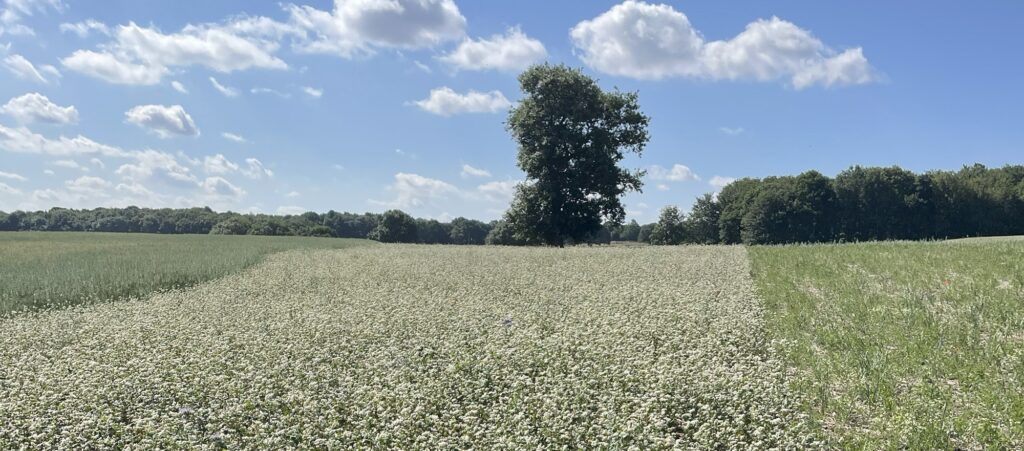Dry Weather Challenges Across the Rotation
By Phil Rowbottom, for Direct Driller Magazine
It’s fair to say that 2025 has been a year of extremes — and not in a good way. The dry spring and early summer have had a telling impact across every crop on the farm, and this season’s challenges have tested both patience and the resilience of the soil. From the winter wheat to the spring oats, and even the usually tough cover crops like vetch and buckwheat, everything has felt the stress of prolonged dry spells.
Interestingly, we seem to be pioneering a new crop in West Yorkshire, the 30mph wheat……looks great from the road when you drive past it, but very sparse when you’re standing in it and can still see your boots — it tells a very different story!
We’ve always tried to farm with an eye on resilience, soil health and keeping diversity in the rotation. But when nature refuses to play ball, it puts all those strategies to the test. I wanted to share some thoughts and lessons from this season’s experiences — both good and bad — because I know I’m not the only one out there watching crops suffer under blue skies that just won’t break.
Winter Wheat Under Stress
Our winter wheat went in well last autumn, drilled in good time into decent moisture, and we thought we were set up for a strong start.
The Sky Drill continues to deliver a cost effective, timely way of establishing crops, having upgraded from four to six metres, I very much look forward to being able to not only cover the ground a bit quicker, but reduce wheelings across the farm, further adding to soil health. The crop was established well and I had a good feeling coming into the winter. But as the dry weather persisted through March and April, things started to change.
By late April, we were seeing clear signs of moisture stress. The plants were thinner, tillering was limited, and even though disease pressure was low, the crop just didn’t have the energy to push on. Where we had heavier soils or areas with a bit more organic matter, you could still see some potential, but the lighter ground has really suffered. It’s a stark reminder of how crucial water retention is becoming.
One positive note is that the wheat has remained relatively clean. We managed to reduce fungicide spend without taking too much of a gamble and have reduced the nitrogen input from 220kg per hectare to 180kg across the wheat crop as a whole. The problem is yield potential — right now I expect to be 15–20% down compared to our five-year average, purely because of lack of moisture at key growth stages.
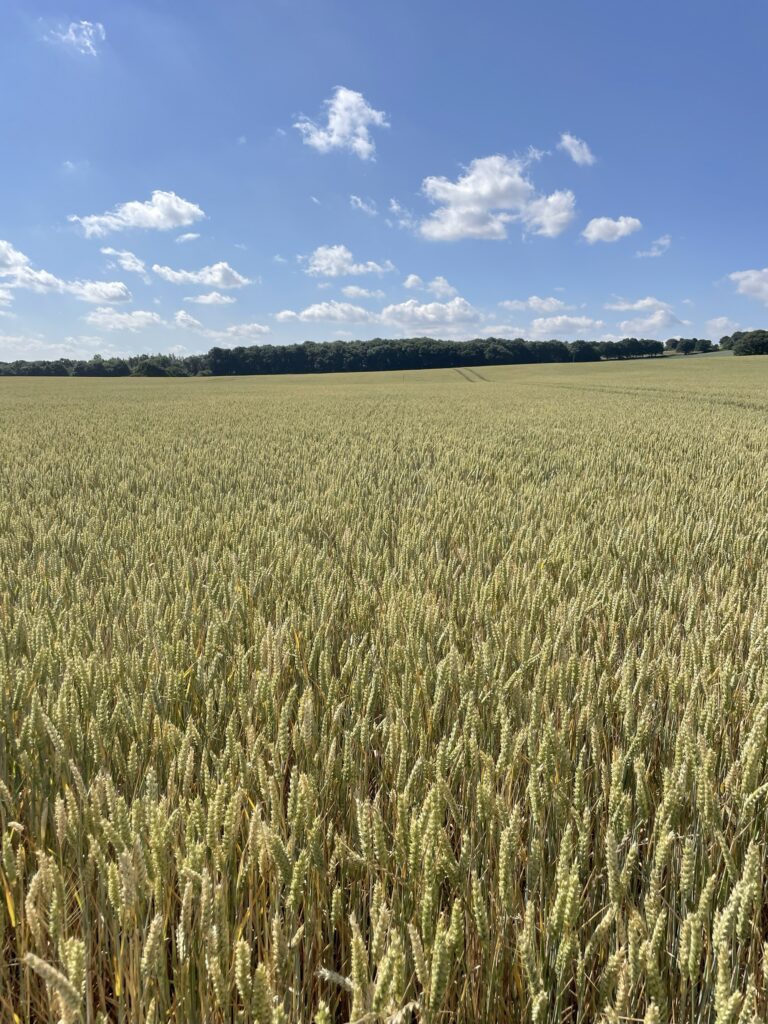
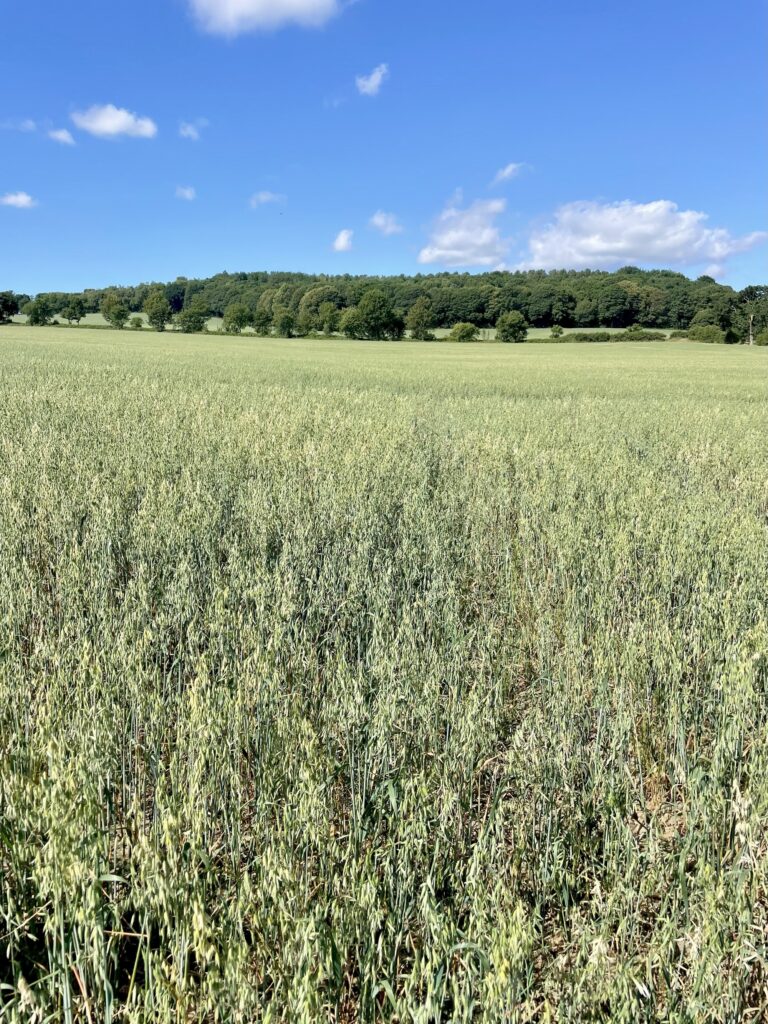
Spring Oats
I had high expectations of our spring oats being the answer to our break crop conundrum in the absence of OSR. However, like the wheat, the oats have taken a hit this year, primarily due to the lack of moisture from when they were drilled. They went into dry seedbeds in March, and we held our breath hoping for some April rain that never really arrived.
Oats aren’t a particularly deep rooted crop, and they rely on good early establishment to create enough canopy before heading. Not an overly tall crop, tillering has been minimal. Even with some late rain in June, it felt like too little, too late.
Oats aren’t a particularly deep68 DIRECT DRILLER MAGAZINE ISSUE 33 | JULY 2025DIRECT DRILLER MAGAZINE www.directdriller.com 69 rooted crop, and they rely on good early establishment to create enough canopy before heading. Not an overly tall crop, tillering has been minimal. Even with some late rain in June, it felt like too little, too late.
Cover Crops for Seed: Vetch and Buckwheat in Trouble
Due to the ever-increasing cost of cover crop seed, I decided it was worth trying to grow some vetch and buckwheat for seed. I was optimistic we’d have a halfdecent crop given how both species have previously performed. They’re both fantastic species in their own right: vetch with its nitrogen-fixing abilities and biomass, buckwheat for its rapid growth and phosphate scavenging. But this year has shown that even hardy cover crop species aren’t immune to prolonged dry conditions.
The vetch, sown in early April, never really got going in the dry conditions. As the drought dragged on, the plants remained stunted. Flowering was poor, and pod development was patchy at best.
The buckwheat, on the other hand, has fared a lot better. Although not much of a crop in height, it’s all there and should hopefully produce some seed. Of the two crops it appears to have been much more resilient to the dry conditions.
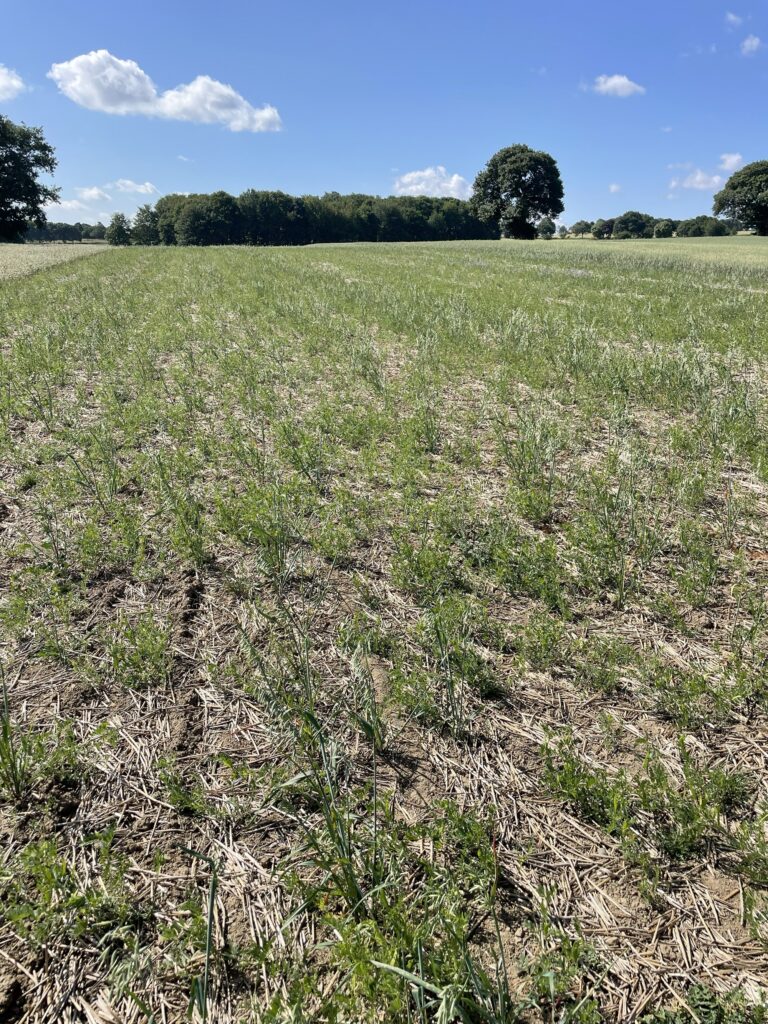
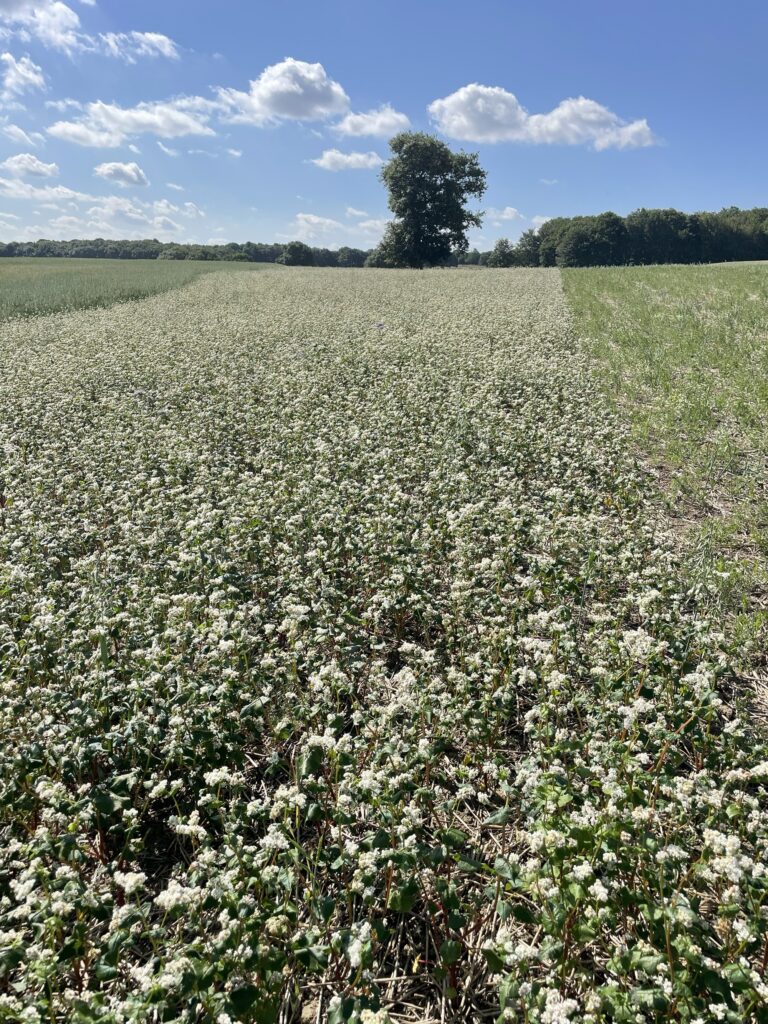
Biodiversity Boost: A Bright Spot in a Dry Year
Despite the struggles with crop performance, one real success this year has been the role that cover crops and pollinator flower strips have played in supporting on-farm biodiversity. Even in the dry conditions, the perennial and early-sown strips have thrived in patches and delivered a massive benefit to pollinators — the bee population has exploded this season.
On warm mornings, the sound of buzzing across the farm has been unmistakable. It’s a stark contrast to a decade ago, and a real motivator to keep going with habitat-focused margins. But it’s not just the bees. We’ve seen an increase in butterflies and the wider wildlife appears to be thriving.
The strips and cover crops aren’t just ticking agri-environment boxes — they’re making the whole farm feel alive. We’ve seen broods of grey partridges and even a breeding pair of red leggeds for the first time in memory! It reminded us that even when the yield maps look disappointing, the landscape can still be productive in other ways.
Lessons in Resilience
This season has been a stark reminder that soil is everything. Investing in organic matter, wildflower strips and maintaining cover cropping all seem to be helping soil health and resilience. We’re looking harder at moistureconserving tactics. Straw retention and leaving stubbles slightly taller both seem to help with retaining water. If the weather is going to be more unpredictable, then every drop of moisture counts, and we’ve got to hold on to it for as long as we can.
There’s also a question about crop choice. Spring oats might not yet be the answer, but they certainly seem a better gamble than OSR. However, it really is a balancing act between soil health goals and economic realities.

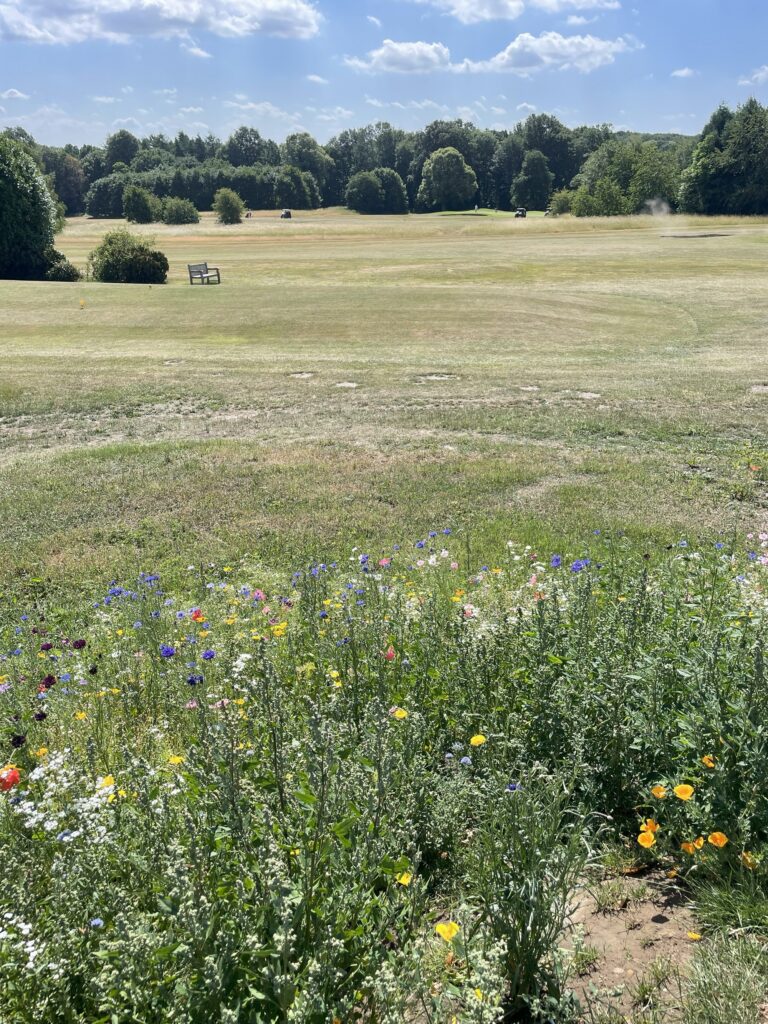
Looking Ahead
Despite the challenges, I remain optimistic. Every tough season gives you a clearer sense of where the weaknesses are in your system, and that’s valuable information. We’ll get the combine rolling soon, and I’ll be going into harvest with realistic expectations, yet with an eye on what can be improved for next time. Just don’t ask me how the grass is looking on the other side of the business — while we don’t need any rain at harvest, the grass on the golf course is getting a bit desperate for a drink!
Let’s hope the next season brings a bit more balance and not all the rain in one go as we’ve had in previous years!




